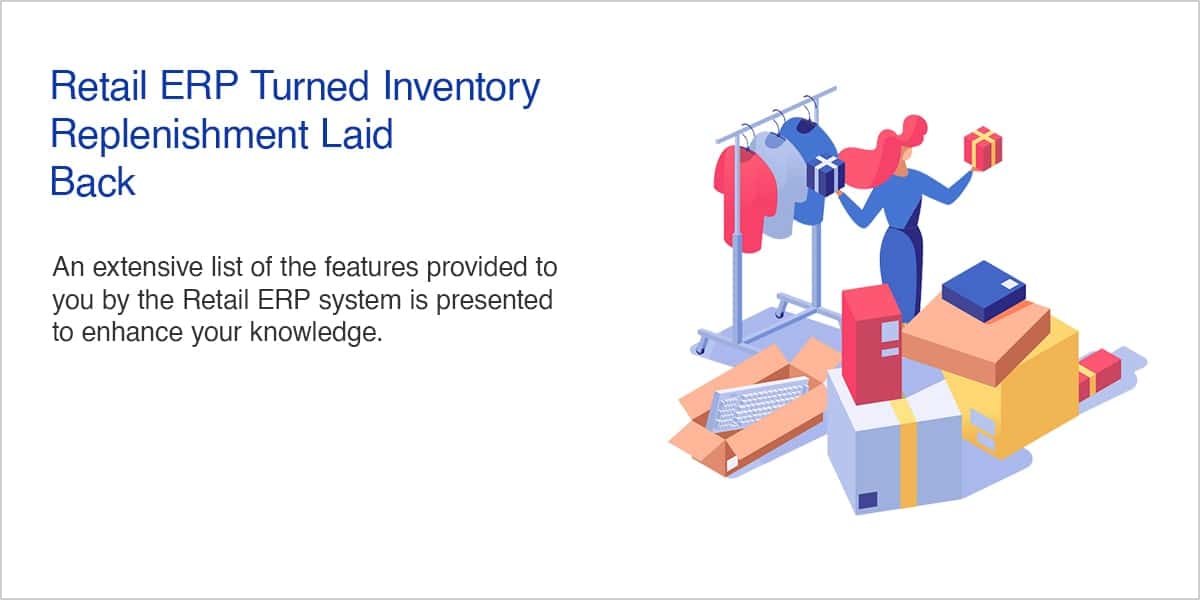Retail ERP Turned Inventory Replenishment Laid Back
- ERP (Cloud) September 25,2019

Inventory management is the base of retail. Retailers had always been seen worried about stocks and looking after its organization. Without maintaining inventory, it’s impossible to run your store in an organized manner.
Retailers use to make a lot of manual efforts or hire workers to look after. Inventory management is based on a variety of data to keep track of the goods as they move through the process, including lot numbers, serial numbers, cost of goods, the quantity of products and the dates when they move through the process. Retail ERP system is specially designed to satisfy you and overcome the tensions of inventory.
How ERP Systems for retail work?
Customers Profile
Retail ERP allows making customers profile and keep their complete data. Every time the customer checks out its details are preserved. Customer can even make an online payment, and every type of payment facility is feasible. This data is utilized for purchase behavior analyses and providing facilities to the customers. Whenever there are updates or ongoing discounts system notifies the customers about it. Buying history of customer also helps to know which products are in demand.

Stock Review
The system makes Stock review by its specially designed module. Stock review involves regular analysis of stock on hand versus projected future needs. The automated stock review enables regular inventory inspections and reordering of supplies to meet the minimum levels. Retail ERP manages stock evaluation to provide a measure of required inventory in coming days according to the customer’s purchase history analysis. Make estimates from customers buying patterns, seasonal demand, and location-based factors.
ERP Flow
Its intelligent functions present an accurate picture of what goods are needed at certain times and places. It works on ABC analysis methodology by classifying inventory into three categories that represent the inventory values and cost significance.
Here category A represents high-value and low-quantity goods, category B represents moderate-value and moderate-quantity goods, and category C represents low-value and high-quantity goods. Each category is managed separately by top retail ERP systems designed for the management of inventory. It’s important to know which items are the best sellers to keep quantities of buffer stock on hand. ABC analysis provides better control over high-value goods.
Inventory & Accounts Control
Inventory control refers to inventory management concerned with reducing the total cost of inventory while maximizing the ability to provide customers with products promptly. Inventory management ERP tracks the quantities of goods in a warehouse and can even track of goods in inventory, across several warehouse locations.
The system calculates the costs in multiple currencies so that accounting systems always have an accurate assessment of the value of the goods.
ERP systems for retail change the mechanize of the way a retail shop use to work. Replenishment of inventory stays no more a big deal. Every item is under your control, and you can easily forecast what the needs of the future are and how customers will be satisfied. Keeping customers satisfied is the biggest concern in today’s fast-moving world.









 Saudi Arabia (English)
Saudi Arabia (English) United Kingdom
United Kingdom Global Site
Global Site